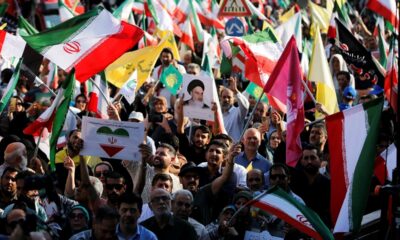Asia
‘Conservatives try to form government with army and US support’

Sabbaha Ali Khan Colince, a member of the central committee of the Workers Party of Bangladesh, gave Harici an assessment of developments in the country and the current situation: “Anti-freedom, far-right parties dominated the protests. The radical conservative Jamaat-e-Islami and the Bangladesh Nationalist Party are trying to form a new government in cooperation with the military and with the support of the United States. The majority of young people taking part in the protests are unhappy with this situation”.
Bangladesh, the South Asian country that declared independence from Pakistan in 1971, has been rocked by events that some call a ‘people’s movement’ and others a ‘coup’. Prime Minister Sheikh Hasina, 76, who has ruled the country since 2009 after her first term from 1996-2001, fled the country as a result of the events and sought refuge in neighbouring India.
Before her resignation this week, Hasina was one of the world’s longest-serving female leaders and a symbol of ‘secularism and democracy’ in the country, leading the Awami League, the party of her father, Mujiburrahman, who was deposed and killed in a 1975 coup. But despite being returned to power in recent elections, Hasina’s government has frequently been rocked by social movements and protests. With allegations of corruption on top of inflation and livelihood problems, Hasina’s government has suffered a serious loss of confidence.
The government’s introduction of preferential quotas for relatives of veterans of the country’s 1971 war of independence against Pakistan, which provided many jobs in the public sector, caused a huge backlash among young people, especially students, who are struggling with unemployment. Bangladesh is one of the most densely populated countries in the world and more than 30 million young people are unemployed.
The student-led protests were joined by opposition parties, including the radical conservative Jamaat-e-Islami and the Bangladesh Nationalist Party (BNP), and local sources say the opposition parties have taken control of the streets.
While Hasina did not back down in the face of the growing protests, more than 200 people were killed in the protests, which were met with a heavy-handed police response. Withdrawing the quota request was no longer enough to save Hasina.
Following Hasina’s resignation on Monday, military chief General Waker-Uz-Zaman announced in a televised address to the nation that he had taken temporary control of the country and that troops were trying to quell the growing unrest. General Zaman also said Hasina was in talks with leaders of leading political parties other than the long-ruling Awami League to discuss the way forward.
Bangladeshi President Muhammad Shahabuddin dissolved parliament on Tuesday, meeting one of the main demands of protesters following the resignation of Prime Minister Sheikh Hasina, and announced that 84-year-old Nobel laureate Muhammad Yunus would head the interim government.
Yunus, a banker popular in the West, won the Nobel Peace Prize in 2006 for his work in microfinance, which he said would help reduce poverty in Bangladesh.
In 1983, he founded the Grameen Bank with the aim of alleviating poverty through microcredit. The bank has grown rapidly, with branches and similar models now operating around the world. Yunus and the Grameen Bank were awarded the Nobel Peace Prize in 2006 after lending a total of around $6 billion in housing, student and micro-enterprise loans.
However, critics have viewed Yunus and the Grameen Bank with scepticism. The banker Yunus has been criticised on the grounds that high interest rates impoverish borrowers and that lenders make large profits on small loans. Yunus claimed that his aim was ‘not to make money, but to help the poor’.
Hasina, who resigned, had repeatedly criticised Yunus for ‘sucking the blood of the poor’ during her tenure. Yunus has been charged with ‘tax irregularities’ and most recently in June with embezzlement.
While it is notable that Muhammad Yunus, who is seen as close to the West and educated in the US, has come to the fore as a result of the protests, there are widespread assessments that the protests against Hasina were instigated by the US and other Western countries.
The US Assistant Secretary of State for South and Central Asian Affairs, Donald Lu, who visited the country in 2023, said that Bangladesh was ‘rapidly sliding into authoritarianism’ and held separate meetings with opposition leaders and ‘rights groups’.
In the run-up to the January elections, the US banged the ‘democracy’ drum and issued harsh criticisms and warnings to the Hasina government. After the elections, although Hasina’s Awami League party won 223 of the 300 seats in parliament, both the US and the UK criticised the elections as ‘not free and fair’.
In May, the US government imposed sanctions on retired Bangladeshi army chief Aziz Ahmed and his close family over corruption allegations. The move was seen as an attempt by Washington to influence the Bangladeshi government.
India, on the other hand, criticised the US’s tough stance against the Hasina government and warned that it could push Bangladesh closer to China. Indeed, the Hasina government has been trying to strike a balance between its historic friend and neighbour India and China, which is preparing to make major investments in the country.
Following the recent events, the European Union called for ‘an orderly and peaceful transition to a democratically elected government with full respect for human rights and democratic principles’, while the US called for an interim government. “The people of Bangladesh deserve a government that listens to their voices, respects their will and upholds the honour of their nation,” US Senate Foreign Relations Committee Chairman Cardin said in a statement.
We spoke with Sabbaha Ali Khan Colince, a member of the central committee of the Bangladesh Workers’ Party, about these debates and the current situation in the country. A former president of the Students Unity of Bangladesh, Colince was one of the student leaders who led the youth movements in the country.

Speaking from the capital Dhaka, Colince said that the student protests began with socio-economic demands and that the quota system had created a huge backlash among young people struggling with unemployment. Colince explained that the quota system places certain people in certain positions within the state, adding that it excludes other qualified candidates and creates an unfair competitive environment. However, he also said that although this situation had triggered the protests, it was not the only reason. According to Colince, increasing corruption and mismanagement within the government had become apparent. Colince said that in a country struggling with high inflation, rising unemployment and dwindling foreign exchange reserves, the government was focusing on protecting the interests of a small number of business interests and businessmen within the party instead of protecting the interests of the people. He added that Hasina had resorted to repression and police violence rather than reforms to address public discontent.
Colince said that despite this, the protests were gradually moving away from economic demands and reactionary, anti-freedom and anti-democratic political parties were dominating the protests. The left parties failed to organise the response adequately and the radical Islamist Jamaat-e-Islami and the Bangladesh Nationalist Party took the lead in the protests, Colince said, stressing that army chief General Waker-Uz-Zaman only met and consulted with these parties after taking over. We had reported that General Zaman had announced that he had met with representatives of all parties except the Awami League, but Colince said the army chief had met only with Jamaat-e-Islami and the Bangladesh Nationalist Party, ignoring other leftist parties. “The army’s attempt to form a government with anti-freedom, reactionary parties like the Jamaat-e-Islami and the Bangladesh Nationalist Party is against all the values that the youth of Bangladesh stand for. It is against the spirit and principles of Bangladesh’s progressive war of liberation and independence” said. He stressed that the majority of the protesting youth were uncomfortable with this ‘army-conservative-nationalist’ combination trying to dominate the country.
Commenting on discussions about possible US involvement in the protests, Colince said that the US had instigated the protests through Jamaat-e-Islami and the Bangladesh Nationalist Party. Noting that the US had supported these parties before the elections, Colince said, “It is now very clear that the US has a hand in these events. “Unfortunately, I foresee a reactionary, anti-freedom, US-backed government for Bangladesh in the near future,” Colince said, adding that banker Mohammad Yunus, who has been appointed to head the interim government, is also known as an ‘Americanist’.
Sabbaha Ali Khan Colince, leader of the Bangladesh Workers’ Party, said he had not lost hope in the long term and that he had faith in the country’s labour and youth movement and its tradition, which was modelled on Bangladesh’s libertarian, democratic and progressive struggle for independence in 1971 and its principles.

Photos of the Workers Party Bangladesh’ demonstrations against Israel.
Asia
Iran-Israel war: Why US discusses regional conflict with Pakistan
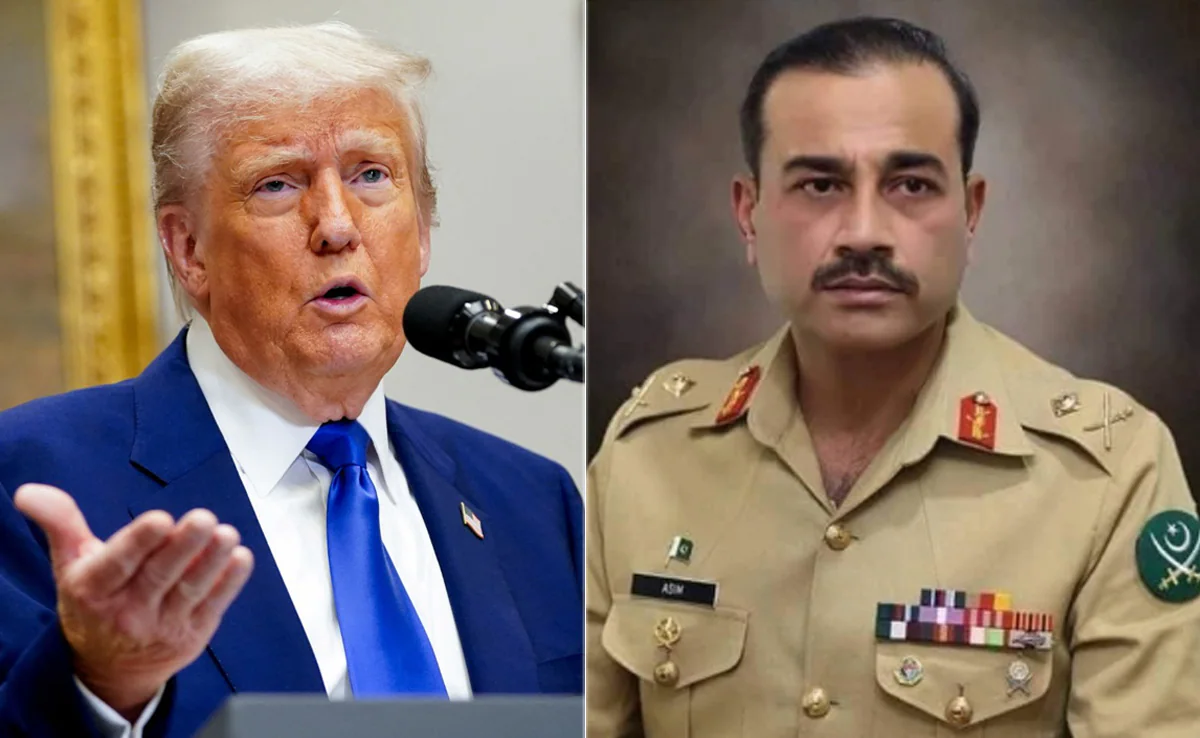
US President Donald Trump and Pakistan’s Army Chief General Asim Munir held a special and important meeting during a time when tensions are rising in the Asian region. The meeting was held on Trump’s invitation and was not open to the media. However, both sides have released official statements afterward, which states that the main topics were discussed
The meeting focused on the ongoing conflict between Iran and Israel, Pakistan–India relations, especially the Kashmir issue, the situation in Afghanistan and future US–Pakistan cooperation.
Pakistan has recently improved its strategic position in the region. It has shown strong ties with China and is the only South Asian country openly supporting Iran in its conflict with Israel. Meanwhile, Pakistan remains an important player in Afghanistan.
Why the Pakistani Army Chief was invited to the US?
Although Pakistan has an elected civilian government, important decisions—especially related to foreign affairs and security—are often handled by the military. That’s why General Asim Munir was invited to meet Trump instead of the Prime Minister, General Munir’s influence has grown recently. After tensions with India, he was given the title of Field Marshal. His meeting with Trump is seen as a sign of his importance in both Pakistani and international politics.
According to the Pakistan Army’s media wing (ISPR): General Munir thanked President Trump for helping to ease recent tensions between Pakistan and India. Trump praised Pakistan’s role in fighting terrorism. Both agreed to work together in the future, especially in: Trade, Technology Minerals and energy Artificial intelligence Crypto currency and regional peace efforts as well.
President Trump also appreciated General Munir’s leadership during difficult times. Munir invited Trump to visit Pakistan, and Trump reportedly accepted the offer in principle.
Why US former peace envoy to Afghanistan, Khalilzad is not trusting Pakistan’s army chief
Former U.S. diplomat Zalmay Khalilzad criticized the meeting. He said General Munir cannot be trusted and reminded the U.S. that Pakistan has supported groups that harmed American soldiers in the past. According to Khalilzad, General Munir may be trying to get U.S. support for his interests in Afghanistan, which he believes could be risky for America.
Though no official list of US demands was made public, reports suggest a meeting was held in Saudi Arabia earlier, where American officials spoke with top Pakistani leaders. During that meeting, the U.S. reportedly made four key requests: Pakistan should help the U.S. in counterterrorism operations when needed. Pakistan should slowly reduce its relations with China. Pakistan should recognize Israel after Saudi Arabia does. If the U.S. attacks Iran, Pakistan should support the U.S. instead of staying neutral.
These demands are similar to earlier U.S.–Pakistan arrangements during the Cold War and the War on Terror.
What could be expected in the future?
This meeting could mark the beginning of a new phase in US–Pakistan relations. In the past, Pakistan helped the U.S. during the Soviet-Afghan War and after 9/11. Now, with tensions involving Iran, India, and Afghanistan—and China expanding its role—the U.S. may again be looking to Pakistan as a key partner in the region.
Time will tell whether this leads to a long-term partnership or just another temporary agreement based on short-term goals.
Asia
China pledges aid and signs friendship treaty at Central Asia summit
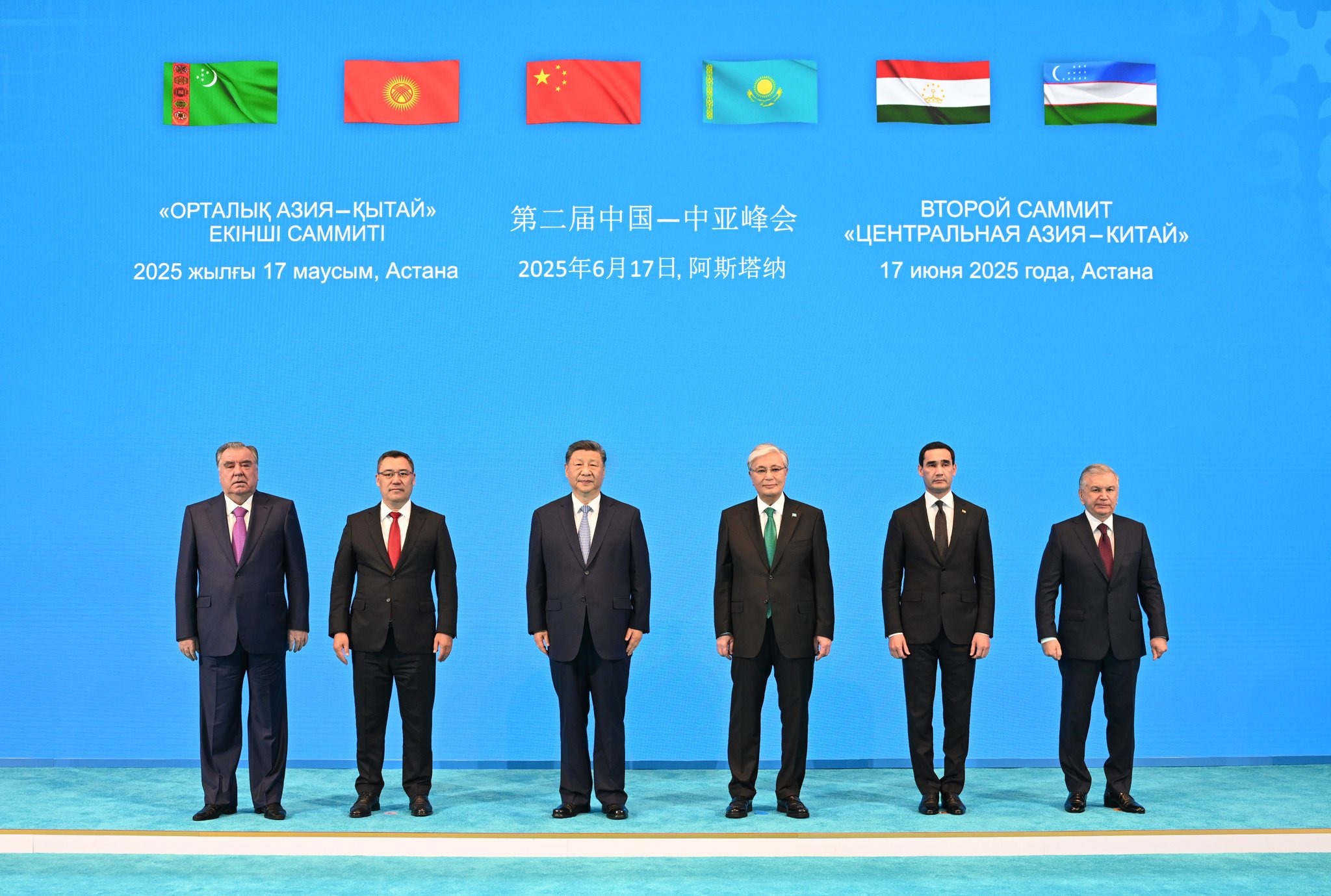
China concluded its latest engagement efforts in Central Asia on Tuesday by pledging 1.5 billion yuan (US$209 million) for livelihood and development projects in the region.
The six nations participating in the second China-Central Asia Summit also signed a historic permanent friendship treaty.
“China is ready to provide 1.5 billion yuan in grant assistance to Central Asian countries this year to support livelihood and development projects of common interest to each country,” Chinese President Xi Jinping stated in his opening address at the summit in Astana, the capital of Kazakhstan.
“Additionally, China will offer 3,000 training opportunities to Central Asian countries over the next two years.”
Xi described the signing of the Permanent Good-Neighborliness and Friendly Cooperation Agreement as a milestone in relations between the six countries, calling it “an innovative initiative in China’s neighborhood diplomacy and a contribution that will benefit future generations.”
China has signed similar agreements with Russia and Pakistan.
Xi also emphasized the need for cooperation in a world that has entered “a new period of turbulence and transformation.”
State news agency Xinhua quoted Xi as saying, “There will be no winner in a tariff and trade war. Protectionists and hegemonists will harm both others and themselves.”
“The world should not be divided, but united; humanity should not revert to the law of the jungle, but work to build a common future for mankind,” he added.
Xi also announced the establishment of three cooperation centers focusing on poverty reduction, educational exchange, and desertification control, as well as a trade facilitation platform under the China-Central Asia cooperation framework.
In a statement on Wednesday, the Chinese Foreign Ministry said that China and the Central Asian countries are eager to improve road and rail connectivity and plan to open more direct flights to and from China to increase mutual exchange.
China will consider simplifying visa procedures with the five Central Asian countries, while all parties will study the feasibility of opening consulates.
Together with Kazakhstan, Kyrgyzstan, and Tajikistan, China will accelerate the modernization of existing port facilities and assess the need for new ones.
The summit was the second of its kind, following the inaugural one held two years ago in Xian, China.
These efforts reflect a deepening of China’s relations with Central Asia, which have historically focused on areas such as transportation infrastructure.
The region is a key part of the Belt and Road Initiative, Beijing’s global development strategy, and China has invested heavily in energy pipelines, infrastructure, and mining projects in Central Asia.
However, China also wants to expand cooperation into sustainable development and renewable energy.
These investments were a major focus of Xi’s meetings with the leaders of the five Central Asian states.
During the meetings, Xi stressed the need to uphold multilateralism and the global trade order. This is part of Beijing’s effort to position itself as a more reliable partner following the US tariff war.
Meeting with Turkmen President Serdar Berdimuhamedov, Xi called for expanding gas cooperation and exploring opportunities in non-resource sectors.
Security was also on the agenda.
“The two countries should further strengthen law enforcement, security, and defense cooperation, jointly combat the ‘three forces,’ and enhance cooperation in cybersecurity,” Xi said, referring to “terrorism, separatism, and extremism.”
Beijing views these forces as threats to national and regional security, and Xi has repeatedly emphasized this stance in his meetings with Central Asian leaders.
While China’s presence in Central Asia has historically focused on economic investments, its influence in the security sphere is growing through joint counter-terrorism drills, training programs, and aid.
This is particularly true in Tajikistan, which shares a long border with Afghanistan, where China is concerned about terrorists returning to carry out operations in its western Xinjiang region.
In his meeting with Tajik President Emomali Rahmon, Xi called for deeper cooperation in law enforcement and security to combat the three forces.
He also called for increasing bilateral trade and investment and improving transportation infrastructure.
Rahmon said Dushanbe would expand cooperation in new areas such as new energy, green industries, and artificial intelligence, and would “strengthen coordination with Beijing for the Shanghai Cooperation Organisation (SCO) to play a greater role.”
The SCO is the main forum for relations between China and the landlocked region. This political, economic, and security bloc was founded in 2001 by China, Kazakhstan, Kyrgyzstan, Russia, Tajikistan, and Uzbekistan. Turkmenistan, reflecting its commitment to “permanent neutrality,” is the only Central Asian country outside the organization.
On Tuesday, Xi also held talks with Kyrgyz President Sadyr Japarov, describing relations between the two countries as being in “the best period in history.”
Xi said the construction of the China-Kyrgyzstan-Uzbekistan railway is a top priority, but new growth drivers such as clean energy, green mining, and artificial intelligence should also be developed.
The talks followed the signing of cooperation documents between China and the summit’s host country, Kazakhstan, covering trade, investment, technology, tourism, and customs.
Xi asked his Kazakh counterpart, Kassym-Jomart Tokayev, to accelerate cross-border railway projects and the improvement of port infrastructure.
Xi also stated, “Beijing and Astana should be strong supporters of each other in turbulent times.”
According to the Kazakh presidential office, Tokayev described relations between the two countries as stable and “not negatively affected by geopolitical challenges and turmoil or the international situation.”
Asia
Iran’s uranium enrichment program since 1979
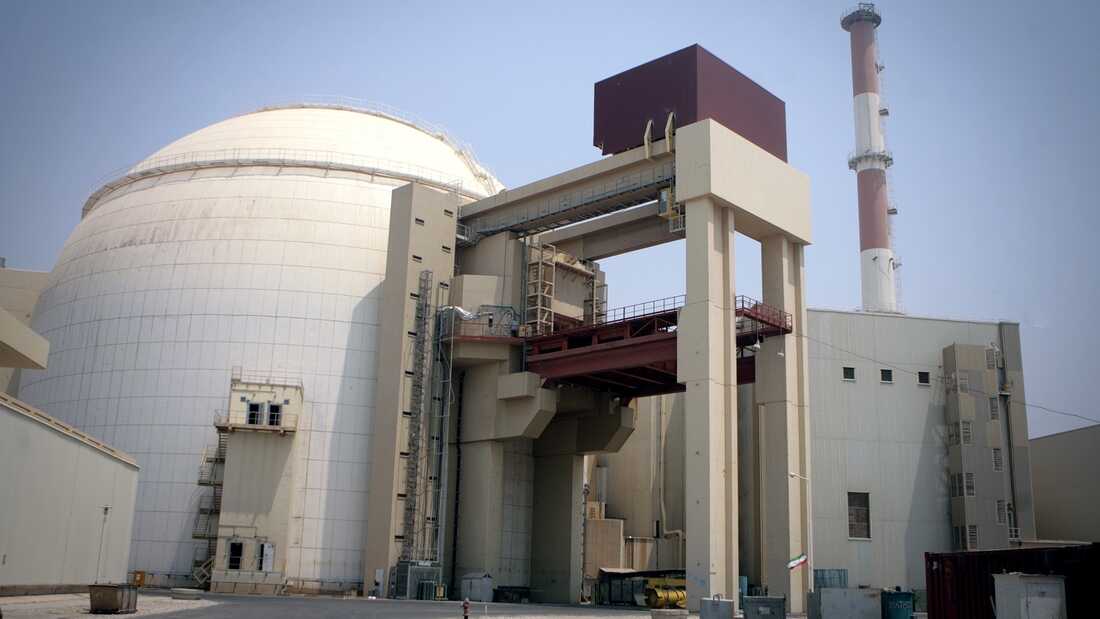
Iran’s uranium enrichment program underwent major changes after the Islamic Revolution in 1979. During the Pahlavi dynasty, Iran had extensive cooperation with Western countries and even received offers to participate in enrichment consortiums.
But after the revolution, this cooperation stopped and Iran pursued the independent development of its own nuclear technology. In the 1980s, Iran was able to achieve an enrichment level of 3.67 percent, which was suitable for supplying fuel to nuclear power plants.
Over time, this rate increased, reaching 60 percent at some points, which raised concerns internationally. Accordingly, the JCPOA, a nuclear agreement between Iran and world powers, was signed in 2015. The agreement was concluded by Iran and the P5+1 group (the United States, UK, France, Russia, China, and Germany) and aimed to limit Iran’s nuclear program in exchange for the lifting of economic sanctions.
Under the deal, Iran committed to limiting its enrichment level to 3.67 percent and reducing its stockpile of enriched uranium. Extensive monitoring by the International Atomic Energy Agency was also imposed on Iran’s nuclear facilities.
US withdrawal from the JCPOA caused Iran to gradually reduce its commitments and increase its enrichment level.
But in 2018, the US administration under Donald Trump withdrew from the JCPOA agreement. The reasons for this withdrawal included US concerns about Iran’s regional influence and the lack of coverage of Iran’s missile program in the agreement.
The US withdrawal from the JCPOA caused Iran to gradually reduce its commitments and increase its enrichment level. In the following years, Iran announced that it had achieved 60pc enrichment and even had plans to increase this level further.
Because uranium enrichment has many applications – at low levels (3.67 percent), it is used to produce fuel for nuclear power plants. At higher levels (20 percent), it has medical applications, including the production of radioactive isotopes for cancer treatment.
But enrichment at 90 percent would lead to the production of nuclear weapons, although Iran has always insisted that its nuclear program is peaceful.
Deadly conflict between Iran and Israel, the two arch-enemy and its impact on the region
The conflict between Iran and Israel is also directly related to Iran’s nuclear program. Israel has always considered Iran’s nuclear program a threat to its security and has in some cases launched cyberattacks and even physical attacks on Iranian nuclear facilities.
On the other hand, Iran considers Israel a threat to the region and supports resistance groups in the region. These tensions have made the Iranian nuclear issue one of the main axes of regional disputes.
Meanwhile, the war between Iran and Israel has widespread effects on the region and especially on the economies of neighboring countries, including Afghanistan.
This conflict not only has military and political consequences, but has also affected the economy of the region and increased economic instability.
Israeli attacks on Iran’s nuclear and military facilities, especially oil facilities, could reduce Iran’s oil production and exports.
This will lead to an increase in global oil prices, which will have a direct impact on the economies of countries that depend on energy imports. Countries in the region, including Turkey, Iraq, and Afghanistan, which source some of their energy from Iran, will face increased import costs.
However, Afghanistan will be directly affected by the war due to its heavy dependence on imports from Iran. The country imports many consumer goods, including food, fuel, and construction materials, from Iran.
The energy crisis is also a major consequence of the conflict between Iran and Israel
If the war intensifies, these imports will be disrupted and prices will increase. The energy crisis is also a major consequence of the conflict. Afghanistan gets a significant portion of its electricity from Iran, and if Iran’s energy exports decrease, Afghanistan will face a power shortage, which will have a negative impact on industries and the daily lives of people. Disruption of trade routes is another consequence of this war.
Reduced imports from Iran and increased transportation costs will increase inflation in Afghanistan, which will put more economic pressure on the people.
These effects occur through several economic and geopolitical mechanisms. New sanctions against Iran could reduce the country’s exports and increase the price of imported goods to Afghanistan.
Regional instability could also increase insecurity on the Iranian-Afghan border, which would affect trade and investment.
Military conflicts could make trade routes unsafe and increase the cost of transporting goods. A prolonged Iran-Israel war would be not only a military crisis, but also an economic crisis for the region and Afghanistan.
Rising oil prices, disruptions in trade, an energy crisis, and inflation are among the consequences of this war. Afghanistan, due to its heavy dependence on imports from Iran, will be the most affected and may face serious economic and social problems. The future of this crisis depends on diplomatic decisions and regional developments; but what is certain is that its economic effects will be widespread and long-lasting.
-

 Diplomacy6 days ago
Diplomacy6 days agoFormer diplomat warns forcing Iran out of the NPT is the greatest danger
-

 Opinion2 weeks ago
Opinion2 weeks agoEuropean defense autonomy and Germany’s military role enter a turning point
-
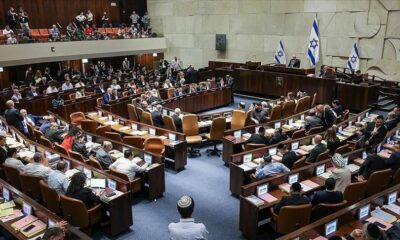
 Middle East1 week ago
Middle East1 week agoNetanyahu’s government survives no-confidence vote as Haredi crisis is delayed
-

 Asia1 week ago
Asia1 week agoJapan, US showcase B-52 bombers in nuclear deterrence dialogue
-

 Diplomacy6 days ago
Diplomacy6 days agoFormer CIA analyst says Israel used ceasefire talks as a trap
-

 Europe1 week ago
Europe1 week agoBrussels prepares to sanction two Chinese banks over Russia ties
-

 Middle East7 days ago
Middle East7 days agoIsrael strikes Iran’s nuclear program, killing high-level commanders
-

 Russia1 week ago
Russia1 week agoRussia outlines naval development plan through 2050










